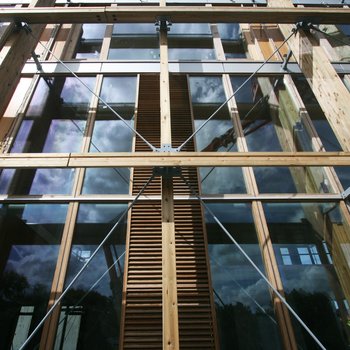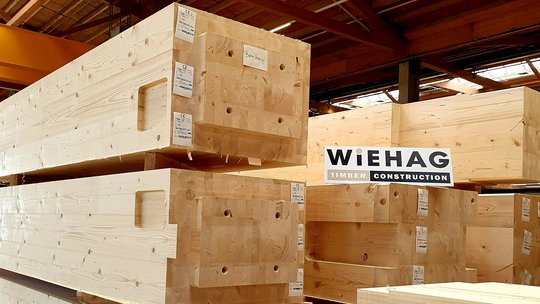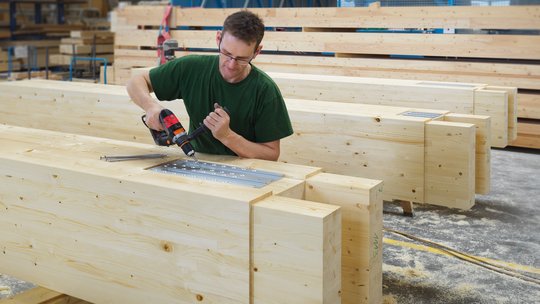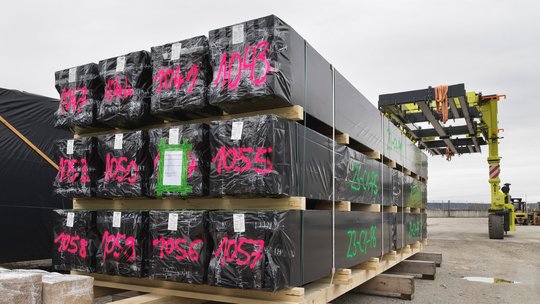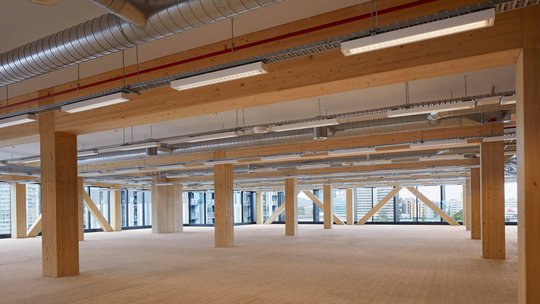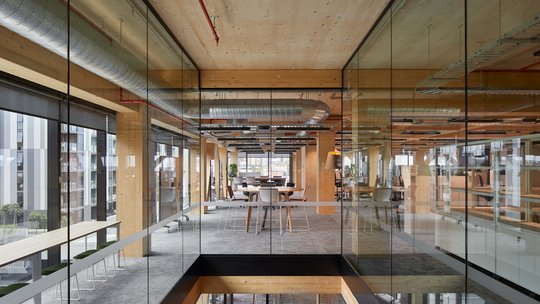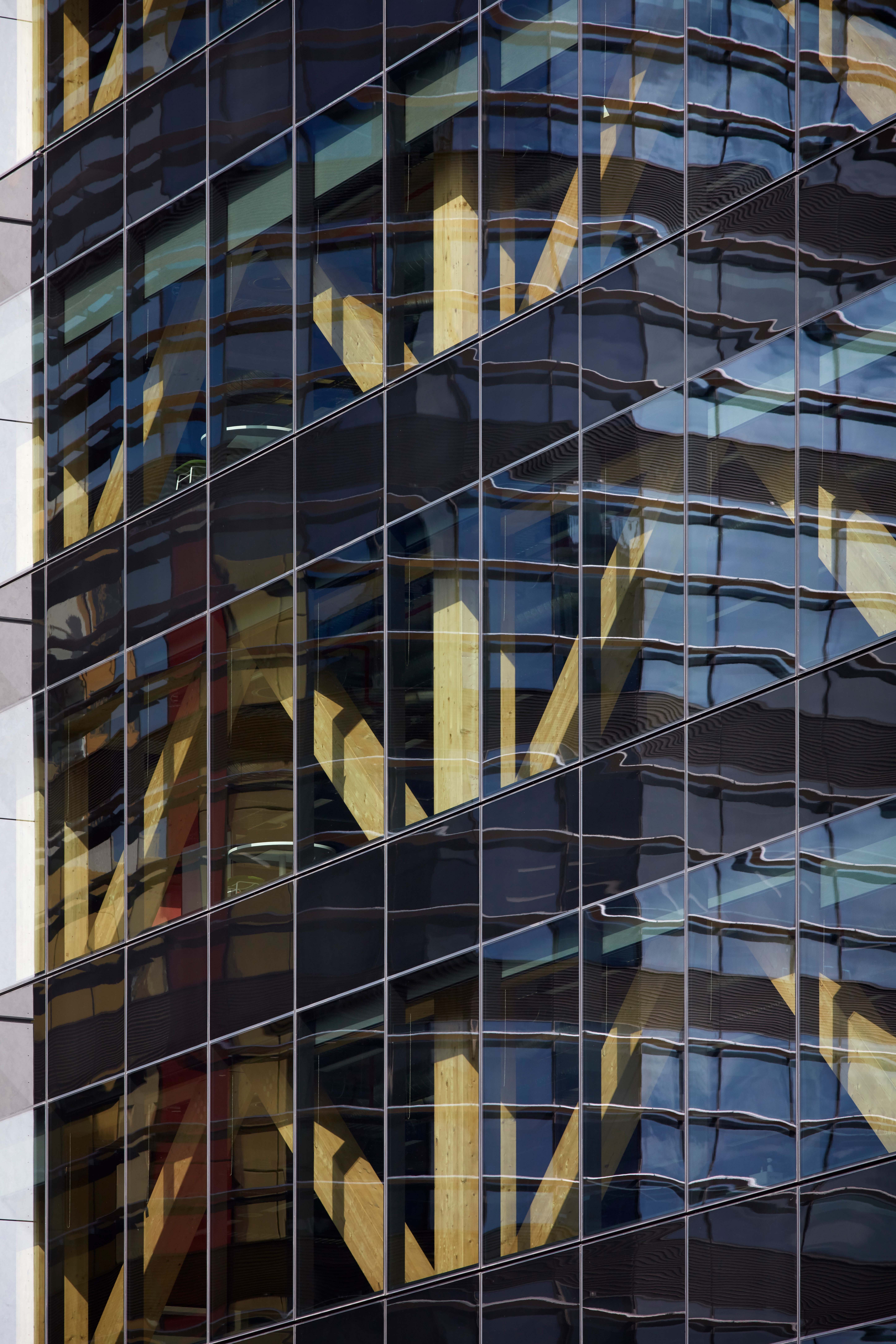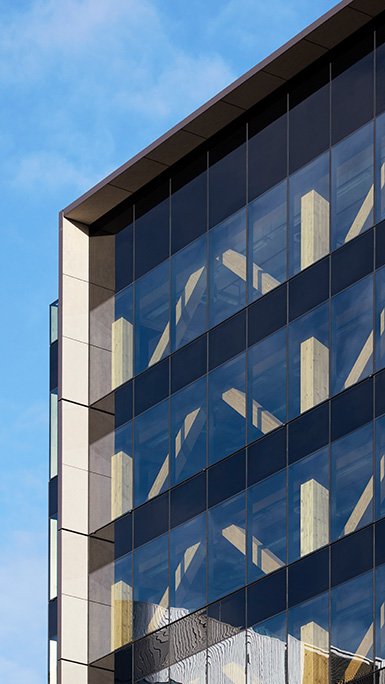
High-rise timber buildings
For sustainable cities fit for the future
Do you want to help make our cities more sustainable and fit for the future? The timber high-rise buildings from WIEHAG can provide part of the solution.
As numerous examples around the world already show, there are many good reasons to build high-rise buildings with timber:
- Maximum prefabrication enables shorter construction times.
- A genuine low-carbon solution that does not rely on offsets.
- Fire resistance can be achieved economically without coating the timber.
- Environmentally friendly compared with traditional materials.
- Much lighter than an equivalent concrete frame, so less foundations are required.
- Attractive appearance without expensive cladding.
- Low maintenance over the life of the building, if designed correctly.
- Just-in-time deliveries reduce the amount of storage space in the city centre.
- Less waste, dust and noise on site and less vehicle traffic. Disturbance to neighbours is minimised.
Thanks to significant advances in design and manufacturing technology, solid timber products such as glued laminated timber and CLT have become leading, renewable, low-carbon solutions.
You determine the project scope for your timber construction project.
We can offer you the full range of services from detailed design to installation, but we can also just act as a workbench for you. This means that you have the design drafted yourself and organise the unloading and assembly. In this case, our scope of services is reduced to mere delivery of the components.
Our services at a glance:
- Detailed design and engineering
- Production
- Steel fasteners, pre-fitted to the GLT and CLT elements
- Transport to building sites worldwide
- Unloading and assembly
Components and connectors for constructing timber high-rise buildings
Highly developed, machined glued laminated timber and CLT components lead to high-quality solutions on the building site. We offer standard or bespoke steel connectors that are pre-assembled with the glued laminated timber and CLT elements. There is a wide range of specifications for glued laminated timber in different types of wood, with different coatings, etc. Would you like to get an idea of how the wood will look and feel? We would be happy to provide you with various samples or mock-ups.
We transport and ship worldwide in containers to your building site. Detailed 3D logistics planning ensures that the materials arrive on time and in the right order for your installation. All glued laminated timber and CLT elements are packed for delivery in accordance with ISPM15 and placed on sledges so that they can be unloaded easily from the containers.
![WIEHAG's timber beam and collum for highrise buildings [Translate to Englisch:] Glulam bzw. Brettschichtholz für den Bau von Holzhochhäusern](/fileadmin/_processed_/6/d/csm_wiehag-highrise-glulam-for-multistorey-buildings_9d9621491b.jpg)
Frequently asked questions about timber high-rise buildings
Whether or not there are height restrictions when constructing buildings from wood depends very much on the shape of the building itself. Above all, the relationship between the floor area and the height of the building is decisive. The overall stability concept also has an impact on the maximum achievable height.
For timber buildings with stiffening staircases and concrete lift shafts, a reasonable limit is around 150 m in height. Above this height, the cross-sections of the lower timber columns become too large. However, if the overall stability is achieved by the timber construction alone (using timber stiffeners), the limit is 60 to 100 metres high.
Hybrid towers with steel/concrete "megafloors" (e.g. on every fifth level) and timber floors in between have similar limits as conventional skyscrapers.
Fire resistance is achieved by charring and embedding fasteners in the wood. While fire regulations vary in each country (between 60 and 180 minutes), wood has the same charring rate all over the world, namely a constant 0.7 mm per minute. This makes the behaviour of wood in case of fire so predictable and therefore safer to plan and handle.
For example, a 600 x 600 mm glulam column has a residual cross-section of 474 x 474 mm after 90 minutes of fire. When we design a high-rise building, we optimise the cross-section for the regular cold design. Then, in the hot design, the reduced cross-section is verified in case of fire. If this is no longer sufficiently load-bearing, the cross-section is increased to obtain a sufficient residual cross-section in case of fire.
We source 100% of our sawn timber from sustainably managed, mainly Austrian forests. We use the PEFC™ chain of custody system to demonstrate our commitment to using sustainable wood. The alternative FSC® system is available for an additional fee if required, as PEFC™ is the more common label for these softwood products in Europe.
Although at first glance it seems practical to use multi-storey columns, as this means fewer individual parts and therefore less lifting on site etc., we only use single-storey columns. When assembling CLT floor slabs and panels between multi-storey columns, there would be a higher risk of damage and the assembly would slow down. Therefore, we prefer to use single-storey columns for projects around the globe.
Yes, foundations can actually be reduced with timber construction, which is an important factor in city centres. This is because glulam and CLT structures weigh only about one-fifth of an equivalent concrete frame. But because they have similar structural properties to concrete, they also have similar component sizes.
Every cubic metre of glulam and CLT contains 826 kg of CO2. This means that hundreds of tonnes of CO2 are sequestered in every high-rise building made of timber. Furthermore, installing the natural, attractive raw material inside your building is a great way to show your employees and customers how seriously your organisation takes its strategy to reduce CO2 emissions.


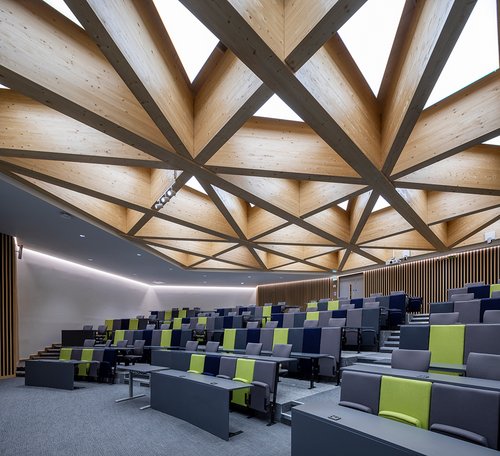
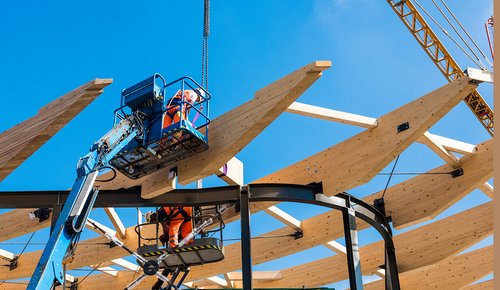
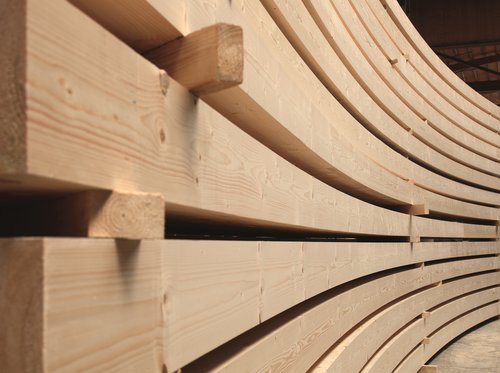
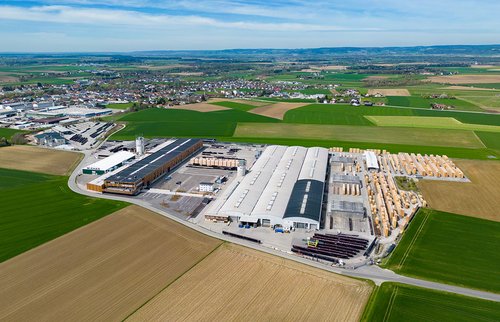
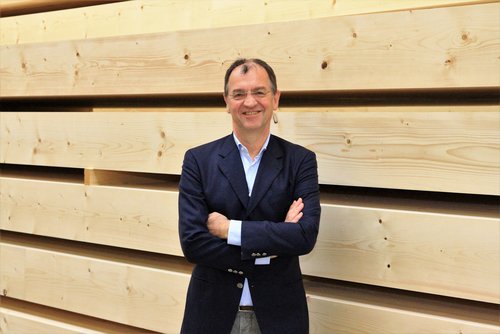
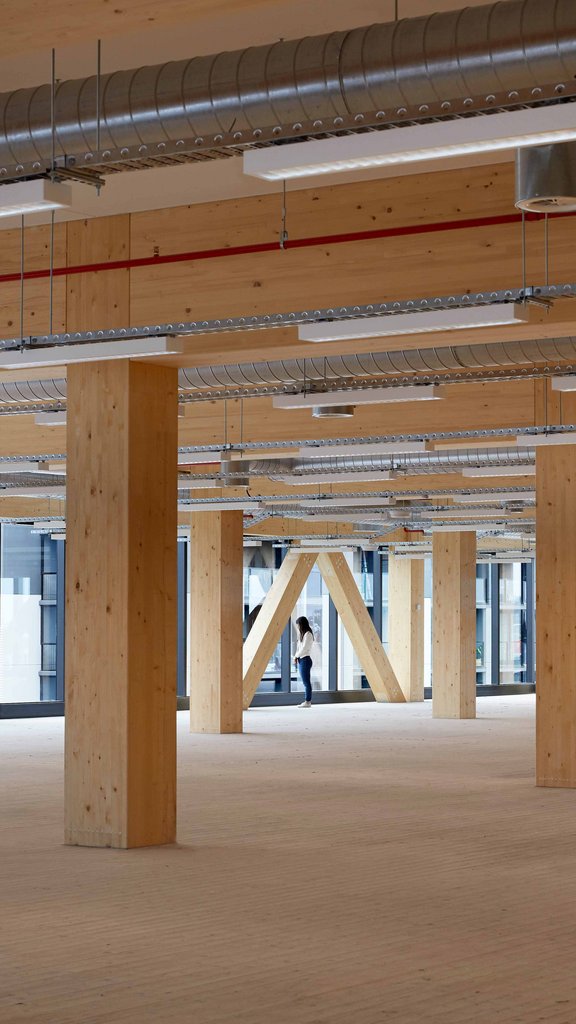
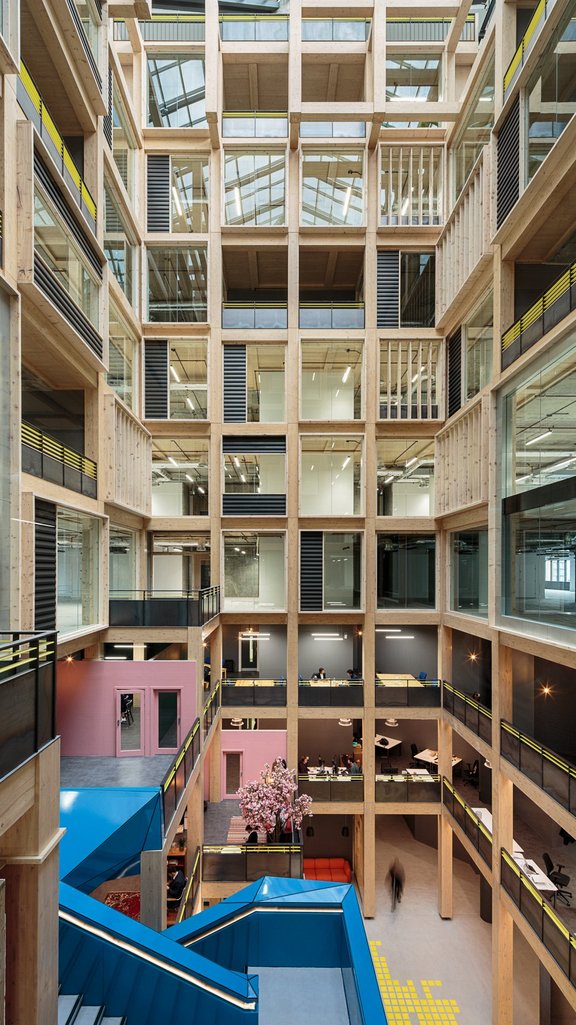
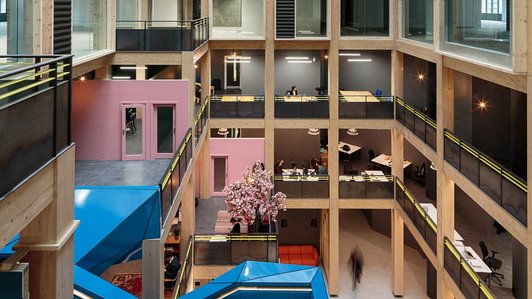
![[Translate to Englisch:] Ascent Tower, Milwaukee [Translate to Englisch:] Ascent Tower, Milwaukee](/fileadmin/_processed_/1/b/csm_wiehag-ascent-tower-milwaukee-1__13__02dbe783b2.jpg)
![[Translate to Englisch:] 25 King Bürogebäude Brisbane [Translate to Englisch:] 25 King Bürogebäude Brisbane](/fileadmin/_processed_/f/6/csm_wiehag-25-king-10_a93f93e01a.jpg)
![[Translate to Englisch:] Nanyang Technological University Singapore [Translate to Englisch:] Nanyang Technological University Singapore](/fileadmin/_processed_/7/8/csm_wiehag-ntu-singapore-13_379b8f5c43.jpeg)
![[Translate to Englisch:] Timber Pioneer Frankfurt [Translate to Englisch:] Timber Pioneer Frankfurt](/fileadmin/_processed_/b/e/csm_wiehag-timber-pioneer-frankfurt__3__3af38b77b0.jpg)
![[Translate to Englisch:] The Import Building [Translate to Englisch:] The Import Building](/fileadmin/_processed_/f/0/csm_wiehag-import-building-01_4b0979bc32.jpg)
![[Translate to Englisch:] IBRB University of Warwick [Translate to Englisch:] IBRB University of Warwick](/fileadmin/_processed_/6/0/csm_wiehag-interdisciplinary-biomedical-research-building-05_7b83d28e89.jpg)
